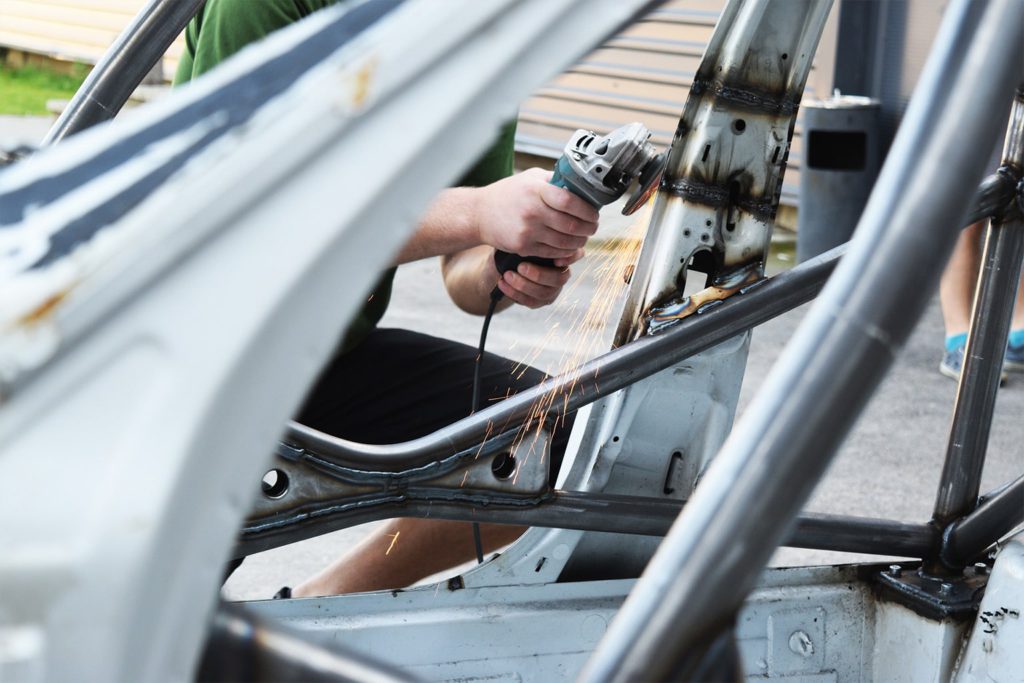- Internal combustion engine (ICE) vehicles and electric vehicles (EVs) both have supply chains that generate significant environmental impacts. Experts argue that circular economy principles—based on reducing, reusing and recycling materials—are key to increasing EV sustainability. But the auto industry has far to go to get there.
- Circularity is deemed particularly important for EVs, which are tipped as a vital climate solution and as the future of light transport across the globe. But their introduction globally is dependent on soaring material resourcing and production, all coming with “embedded emissions,” pollution and other impacts.
- At present, circularity is low in the auto industry, but experts see great potential, particularly for EV batteries. They argue for changes all along the supply chain to reduce material use and encourage advanced recycling.
- Others emphasize a holistic approach to land transport that reduces demand for automobiles in favor of public transportation. Circular economy solutions need to be achieved quickly in the transport sector if emissions are to be cut enough to help curb climate change and reduce pollution and other environmental ills.
This story is the second article of a two-part Mongabay mini-series focusing on the question of sustainability surrounding electric vehicles. Read part one here.
The automotive industry is currently responsible for around 10% of global carbon emissions, largely via tailpipe exhaust from internal combustion engine (ICE) vehicles. Replacing gasoline- and diesel-powered vehicles with electric vehicles is vital to having a chance of avoiding catastrophic global warming, according to experts.
Yet across their respective supply chains, both ICEs and EVs have significant environmental impacts, including ongoing emissions.
Experts argue that a circular economy approach—creating a closed loop supply chain powered by renewable energy that minimizes waste—is essential to curbing climate impacts but also addressing the automotive industry’s ballooning material burden, which will be greatly amplified by the green transition.
Producing EVs based on a circular economy model (that reduces, reuses, and recycles materials), is considered a “key building block for a low-carbon mobility system, and… critical to achieving a 1.5 degree Celsius scenario,” to avoid catastrophic global warming, according to a report by the World Economic Forum. Emission cuts are indeed urgently needed, with the World Meteorological Organization estimating a 66% chance that at least one of the next five years will surpass the 1.5 degree Celsius threshold (that’s a 2.7 degree Fahrenheit rise since the end of the pre-industrial period).
“There is a huge trend for electrification, which is one of the means that is helping us decarbonize the automotive industry,” says Natalia Dziergwa, Circular Cars Initiative specialist with the World Economic Forum. “But it’s not something that can get us all the way there.”
What’s required to slash automotive sector emissions is a shift in attention from EVs themselves, to their manufacture. Minimizing what Dziergwa terms “embedded emissions” in EV supply chains—such as the sourcing of lithium and cobalt used to make electric car batteries—is a key part of this circular approach. Attention to the carbon footprint for sourcing and making thousands of car parts made from steel, copper, aluminum, plastics, glass and other materials is also key.

Circularity in vehicles
A paper published in 2020 estimated that the production of the average ICE sedan in the US uses just 6% renewable energy and 27% recycled materials. But an equivalent battery EV sedan performs little better, with its production using only 8% renewables and 21% recycled materials.
“The metrics show that as far as circularity is concerned there is a lot of opportunity for improvement, but the industry is moving in the right direction,” notes Gregory Keoleian, author of the paper and director of the Center for Sustainable Systems at the University of Michigan. Building cars requires “heavy extraction of material and energy resources, and the system is [currently] very linear,” he adds.
That cradle-to-grave straight line extends to the junkyard, with automotive metals recycled only to an extent. But contamination with other materials results in what experts call “downcycling,” whereby recovered metals, and other parts, are refashioned and used in other sectors, but not in the production of new vehicles.
Closing that recycling loop, particularly with auto body materials such as aluminum and high strength steel, to create new cars is an important step toward enhanced sustainability the auto industry needs to take, at scale, says Keoleian.
Motor company Renault, for example, is developing what it terms Europe’s “first circular economy factory dedicated to mobility.” Based in France, the aim of the facility is to extend the life of vehicles, recover EV batteries for reuse, and increase recycling of scrap cars—strategies meant to reduce carbon emissions and waste.
At present, other vehicle parts—including plastics, glass, and more, known colloquially as “fluff”—are largely discarded, ending up in landfills. Vehicle tires are another example of high energy and resource use; because they are made of composite materials they presently pose a recycling challenge and management headache.
Even though used cars are collected and recycled in some parts of the world (the EU scrap cars recovery rate is around 95%), developed countries also export lots of end-of-life vehicles to developing nations, often illegally. Between 2015 and 2020, some 23 million were exported to middle and low-income countries, resulting in “carbon leakage,” via the continued use of outdated ICE technology, says Dziergwa.
Making this problem worse: The drive toward vehicle electrification is unequal across the globe, with the emissions, pollution, and recycling burden of ICE vehicles continuing to fall on some of the poorest countries.


Circular EVs, batteries, and beyond
Electric vehicles add another layer of complexity to the circular economy model, given the make-up of their batteries. At present, sourcing and manufacture of batteries add significantly to the EV emissions burden, and their environmental and social harm.
And mineral use is forecast to expand greatly—as much as tenfold—to meet demand for new batteries, a trend that runs contrary to material reduction and reuse circular economy principles.
“The amount of materials from [battery] recycling is low,” says Stephen Gifford, chief economist with the UK-based Faraday Institution, due to so few EVs so far reaching the end of their lives. Figures are scarce, but some estimate that around 5% of lithium-ion batteries are recycled globally at present, with much of that resulting in second-life use.
Gifford expects recycling will become a “significant contributor” to circularity in the 2030s as more EVs reach the end of their life cycles. Despite that, these are “very early days in terms of the recycling industry. More research and improvements in engineering need to be done,” Gifford says.
Stripping down spent batteries, or giving them a second life as energy storage, is paramount to increasing EV sustainability, as is increasing supply chain transparency and traceability to ensure sourced materials aren’t causing environmental or social harm, according to researchers. A study by the Institute for Sustainable Futures suggests that recycling has the potential to reduce mining demand for lithium by 25%, cobalt and nickel by 35%, and copper by 55% by 2040.

China currently dominates the EV market and its battery collection and recycling is more advanced. Elsewhere, efforts are underway to expand recycling, including strategies to redeploy end-of-life batteries as storage, with use, for example, in renewable energy infrastructure, a market expected to grow.
Companies in other major EV markets, such as the US-based Redwood Materials, are expanding capacity to recover materials like lithium, and innovating with new technologies to increase resource recovery. Redwood plans to produce enough recycled material for one million EV batteries annually by 2025. Others, such as the UK’s Aceleron, are designing modular batteries with reuse and recycling in mind.
To drive circularity forward, some are advocating for more stringent extended producer responsibility policies for electric vehicles, as EV use increases. Increasingly looping battery materials back into circulation to produce new batteries, or to make other automotive parts, could help reign in soaring EV resource demand, though that may not be enough.
The EU’s battery directive is a strong step in the right direction, according to experts. It strives toward circularity by setting end-of-life targets for the extraction of valuable materials and minerals such as lithium and cobalt, as well as for the recycling of the entirety of batteries.
“While it is true that battery supply chains can have significant environmental and human impacts at the local level, the efforts to improve these outcomes offer significant potential,” Shruti Sarode, a climate change research fellow at the University of California Berkeley School of Law, writes in an email. “The most important thing we need right now are ambitious policies like the EU battery regulation.”
Part of Sarode’s ongoing research is focused on drawing up a blueprint to enable other countries to implement their own sustainable battery supply chains. “In addition to this, we could design EVs with a focus on durability and upgradability, and on using materials that allow for easy repairs and replacement of individual components,” she says.
Dziergwa cautions, however, that while batteries are at the “core” of EVs, auto makers should not neglect circularity for the multitude of other parts when extracting value from end-of-life vehicles. “The approach we are trying to instill is to treat that EV battery as the kind of initial incentive of recycling, but then also look at how it can be expanded.”


Circular transport
Experts emphasize that auto industry recycling, though important, shouldn’t be the sole focus of circular economy solutions. They urge more holistic change to the wider transportation sector, reducing the need for vehicle production. For WEF’s Dziergwa, EV recycling is “probably the last thing we should be looking at.”
There is a need for electrification of public and private transport, but also a need to increase car-free travel, investments in public transport, and encouraging alternative means of mobility, notes the Circle Economy research group.
Dziergwa supports this wider approach to circularity, asking, “Are there different business models that can be used to not necessarily continue with an increase in car ownership?” such as increasing the sharing economy.
She notes that true circularity will require collaboration across multiple sectors, including the auto industry, metal and tire manufacturers and others. This should come in tandem “with remanufacturing, increasing reusability and modular designs.”
Jessika Richter, an associate senior lecturer at Sweden’s Lund University, agrees that a circular EV model is required. But for her too, true transportation circularity demands a broad focus. “We need to look beyond just this product as a product, and look at it [EVs] as part of a [much larger] mobility system where we need a big transformation.”
This article first appeared on Mongabay and was originally written by Sean Mowbray, a Mongabay contributor. It has been republished here under the Attribution-NoDerivatives 4.0 International (CC BY-ND 4.0) Creative Commons license.

